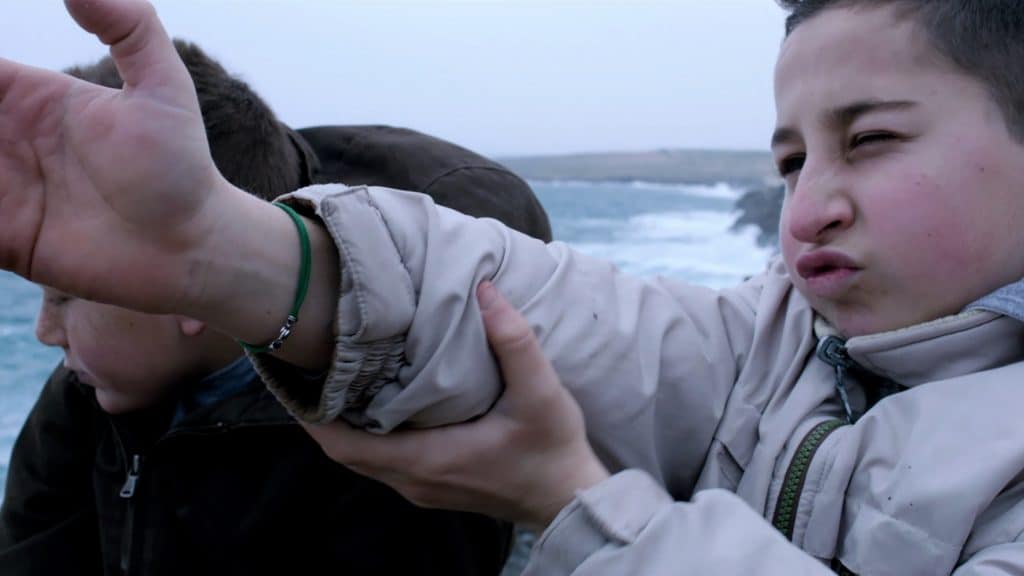A striking look at the European refugee crisis whose fly-on-the-wall directing approach lets it build a revealing portrait of two contrasting realities
Fire at Sea (Fuocoammare) (2016)
Written and directed by Gianfranco Rosi.
Fire at Sea, winner of the Golden Bear at the 66th Berlin International Film Festival, is a striking look at the current refugee crisis in Europe. Located about 120 miles off the Sicilian southern coast and with an area of 7.8 square miles, the Italian island of Lampedusa is seen as a primary entry point into Europe for more than forty thousand African migrants who risk their lives crossing the Mediterranean Sea every year in the hopes of starting a new life. Using the same fly-on-the-wall approach of his solid Sacro GRA (2013), director Gianfranco Rosi observes the lives of a group of people on the island and in the process builds a revealing portrait of the contrasting realities lived by the locals and the Africans who arrive there.
A place of tremendous beauty, Lampedusa owes most of its economy to tourism. The population of 6,304 people, mostly fishermen, live mainly off what the sea has to offer. Rosi understands the importance of the sea for the Lampedusans and obtains stunning shots of it using an ARRI Amira digital camera that also allows him to shoot in dark environments. We witness the surveillance of those waters and the peaceful moments of the locals in their fishing boats and pontoons. On the island, Samuele spends his time making slingshots and targets out of cacti to pretend to shoot at them. His father tells him about the hard life when he used to spend six to seven months per year away on the high seas. Now, he prefers the shores, and Rosi’s camera glides unobtrusively as it shows his family of three eating pasta with seafood in peace.
The migrants also prefer the shores, for the sea can be so cruel and unforgiving. In one given moment, we see the doctor in need of a cultural mediator so that he can explain to a pregnant African woman the sex of her twin babies. The language is also a barrier, and there is a whole procedure for the processing of the migrants, who arrive after several days at sea in bad shape and covered with chemical burns from diesel fuel. One of them tells us how he fled from Nigeria through the Saharan Desert for many weeks into Libya, where several went to prison and died after years of being locked up. Libya under ISIS didn’t want to help Africans, and out of ninety passengers on his boat, only thirty survived.
The conditions are so awful for those who attempt this crossing that some have to be removed from the boats to receive medical attention before reaching the island due to their critical state, dehydrated and exhausted. It is a tragic sight, and we can understand why the doctor can’t get used to what he sees and feels a hole in his stomach every time he has to examine the dead bodies of women and children in such a horrible state. “It is the duty of every human being to help these people,” he says. Indeed, it is. When an African man looks straight to the camera at one moment, it is like shades of François Truffaut’s The 400 Blows (1959), almost begging us to not turn our faces away from what we see.
But even as it shows the hardships endured by these migrants desperate to escape hell, Fire at Sea also finds space for delicacy and humor, and that in fact also speaks of this cultural contrast. We see migrants from so many countries like Somalia, Libya, Sudan, Syria and Eritrea playing soccer together and united by their common situation, which is, however, still far from being as peaceful as the lives of the locals who can afford having a coffee in the afternoon and listening to the radio. And Samuele, despite having a funny anxiety crisis, does have a childhood to remember when he is older, and the scene that shows him in the classroom is delightful in its simplicity.
With no need to make any effort to show us that there are too many things wrong with this world, Fire at Sea touches upon more hard-hitting points than Sacro GRA did. I agree in parts with The Economist that we don’t see how the lives of the locals are affected by the presence of the migrants who pass through the island on their way to Europe or back to Africa, but the last scene couldn’t be more telling and meaningful as it shows a boy playing war while there are people in so many places who suffer real ones and fight to escape them.





